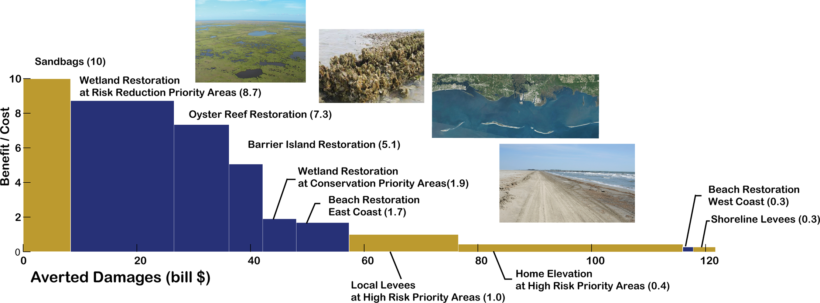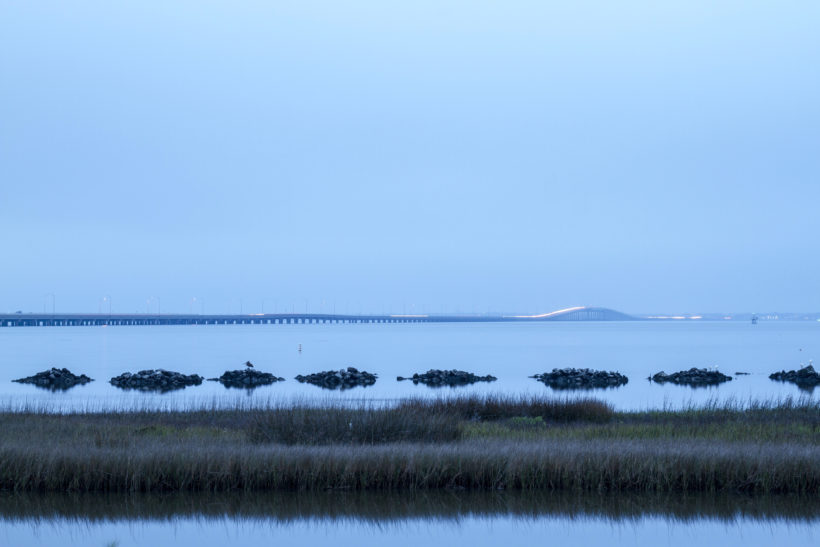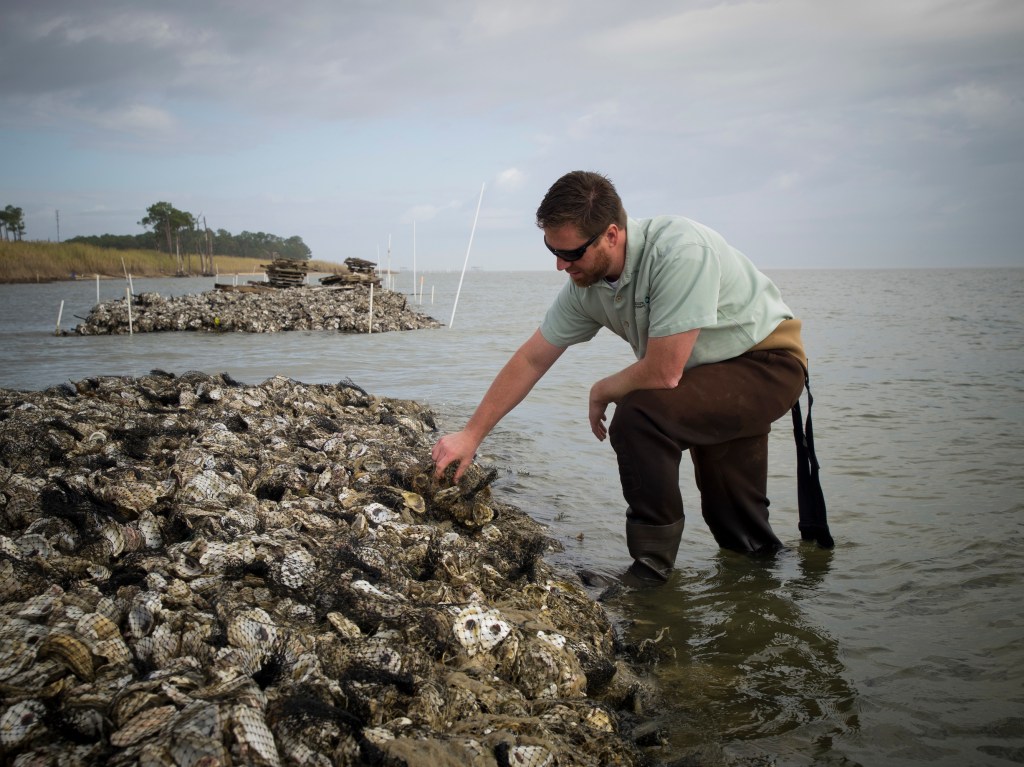TNC-led Science Uses Insurance Industry-based Models to Show Nature is Very Cost Effective for Reducing Risk from Storms and Sea Level Rise
Last year – 2017 – currently stands as the costliest Atlantic hurricane season on record. Ever. Of course, how long that dubious record will stand is anybody’s guess. At the very least, the ongoing rate of coastal development combined with land subsidence, climate change and sea level rise increases the odds that catastrophic storms and floods are likely to become progressively more common and more costly in both lives and property.
On the U.S. coast of the Gulf of Mexico, the major driver of risk is coastal development, particularly for the most extreme and costly events: the more people and property exposed to coastal hazards, the greater the flooding risk. Climate change, however, will result in more frequent insured and uninsured losses. And events causing $100 billion in damages may become approximately three times more frequent here in the future.
So that’s the situation. Of course, we’re informed optimists, or we wouldn’t be working on the science of coastal risk reduction, especially in a place as vulnerable as the Gulf of Mexico. And while it’s true that both coastal development and climate change are increasing the risk of flooding for communities here, it’s also true that restoring healthy coastal habitats – like marshes and oyster reefs – is an extremely cost-effective solution for reducing those risks.
How Cost Effective is Cost Effective?
Our new paper – published today in PLOS ONE – shows that wetland and reef restoration in the Gulf can yield benefit-to-cost ratios of above 3.5 on average, (and in some cases greater than seven to one), meaning more than $3.50 in direct flood-reduction benefits for every $1 spent on restoration. In contrast, many artificial solutions (such as levees and home elevation) have benefit-to-cost ratios near or below one-to-one; their benefits can be high, but they are expensive to implement at scale.
The study, “Comparing the cost effectiveness of Nature-Based and Coastal adaptation: a case study from the Gulf Coast of the United States,” applied the Economics of Climate Adaptation (ECA) approach, which was developed by Swiss Re and partners to understand what drives coastal risk and to evaluate the cost effectiveness of adaptation options. (In addition to us, study authors also included other researchers from The Nature Conservancy, the University of California Santa Cruz, and ETH Zurich).

The resulting analysis shows – for the first time – that the cost effectiveness of nature-based (green), artificial (gray) and policy solutions (like regulations) for reducing risk from storms and sea level rise can be directly compared – quantitatively – (apples to apples, so to speak) to one another across a region as large as the Gulf of Mexico.
Now nature-based measures for flood reduction can be considered right alongside artificial or gray measures such as seawalls in a common framework and using industry-based risk and benefit-cost models used in the insurance risk industry to measure risk and risk reduction investments. This matters because it removes a major impediment for engineers, insurers, and risk management agencies who might want to be able to consider more natural coastal resilience solutions. (For example, Benefit-Cost analysis is also an important tool for agencies like NOAA and FEMA for assessing projects in programs such as the Hazard Mitigation Assistance and Public Assistance programs).
In the Gulf of Mexico, our study shows that nature-based or green solutions are particularly cost effective in comparison to most ‘gray’ solutions. In fact, large-scale oyster and wetland restoration projects, could help avert more than 45 percent of the climate risk over a 20-year period in the Gulf, saving more than $50 billion in flood damages. Nature-based solutions can be even more cost effective if additional ecosystem services such as fisheries, recreation, and other benefits are considered.
The Future is Now
This study comes at a pivotal time in the Gulf of Mexico. Billions of dollars will be spent on Gulf restoration over the next 15 years and there is a tremendous opportunity to reduce risk to the people of the Gulf coast community by developing projects that meet multiple objectives.

Nature-based solutions, such as oyster restoration and wetland protection, provide the opportunity to reconcile multiple goals in strategic locations. Large-scale restoration projects could potentially restore vulnerable coastal habitats while at the same time reducing storm risk for the millions of people who live and work on the Gulf.
The science has advanced to a point where we can identify on a map where the opportunities exist to align habitat restoration, climate adaptation and risk reduction for the ultimate benefit of people and nature in the Gulf.
This study comes at an opportune time as decisions are being made right now, both within and across states, about how and where to spend Deepwater Horizon settlement funds. Industry based models show us that funding large scale nature-based solutions in strategic locations across the Gulf of Mexico is cost effective and could lead us to a future, more resilient gulf.
About the authors:
Boja G.Reguero is a researcher at the University of California, Santa Cruz, and with The Nature Conservancy. His work focuses on Climate Risk and Adaptation and ecosystem-based solutions.
Christine Shepard is the Director of Science for The Nature Conservancy’s Gulf of Mexico Program. She lives on Florida’s Gulf Coast coordinates restoration planning and science across the five Gulf states.




Very informative. Are there facts and statistics that support your claim? I live at the mouth of the Peace River. There are some mangroves at the edge of my property. What else can l do to protect my property?
Hi Susan, All of the supporting data can be found in the PLOS ONE article that this post references: http://journals.plos.org/plosone/article?id=10.1371/journal.pone.0192132 It is open access, so you have access to the full text and the supporting information. I suggest that you get in touch with your state Nature Conservancy chapter to learn more about what you can do in your area. Thank you for your question!
If we paid attention to nature, instead of trying to force our will on it, things would go much better for everyone. Just look at history and learn, stop trying to teach nature about nature.